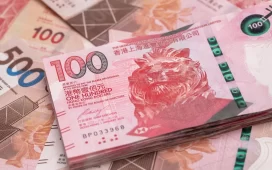- Indian Rupee edges lower in Tuesday’s early European session.
- Dovish bets for the RBI weigh on the INR, but a multi-phase US-India trade deal might cap its losses.
- Investors brace for the Fedspeak later on Tuesday.
The Indian Rupee (INR) weakens on Tuesday. Consumer inflation in India fell more than expected to a near six-year low in April, strengthening bets that the Reserve Bank of India (RBI) is due to extend its rate cutting cycle. This, in turn, undermines the Indian currency. Additionally, renewed concerns over the potential reintroduction of trade tariffs by the Trump administration could exert some selling pressure on the Asian peers, including the INR.
Nonetheless, a decline in crude oil prices might help limit the local currency’s losses, as India is the world’s third-largest oil consumer. Lower crude oil prices tend to have a positive impact on the INR value. A multi-phase trade deal between the US and India could also underpin the local currency.
Investors will monitor the Fedspeak later on Tuesday. The following Federal Reserve (Fed) officials are set to speak, including Thomas Barkin, Alberto Musalem, Adriana Kugler, Raphael Bostic, Mary C. Daly and Beth M. Hammack.
Indian Rupee remains weak amid trade deal discussions
- India is discussing a US trade deal structured in three tranches and expects to reach an interim agreement before July, when Trump’s reciprocal tariffs are set to kick in, per Bloomberg.
- The interim deal would most likely cover areas including market access for industrial goods, some farm products, and addressing some non-tariff barriers, such as quality control requirements, the people said, asking not to be identified because the discussions are private.
- ICRA on Monday forecast India’s GDP growth at 6.9% in the quarter ended March 31, and at 6.3% for the full 2024-25 fiscal year, undershooting the National Statistics Office (NSO) estimates made in February.
- Moody’s lowered the US rating from ‘Aaa’ to ‘Aa1’, citing that successive US administrations had failed to reverse ballooning deficits and interest costs.
USD/INR keeps the bearish vibe under the key EMA
The Indian Rupee trades on a softer note on the day. The bearish outlook of the USD/INR pair remains in place as the price remains capped below the key 100-day Exponential Moving Average (EMA) on the daily chart. Nonetheless, further consolidation or temporary recovery cannot be ruled out as the 14-day Relative Strength Index (RSI) hovers around the midline.
The first downside target to watch for USD/INR is 85.00, the psychological level. If the price breaks below the mentioned level, the pair could revisit 84.61, the low of May 12, followed by 84.20, the lower limit of the trend channel.
On the other hand, sustained trading above the 100-day EMA at 85.60 could open the door for a move toward the 86.00-86.05 zone, which marks both a round figure and the upper boundary of the trend channel.
RBI FAQs
The role of the Reserve Bank of India (RBI), in its own words, is “..to maintain price stability while keeping in mind the objective of growth.” This involves maintaining the inflation rate at a stable 4% level primarily using the tool of interest rates. The RBI also maintains the exchange rate at a level that will not cause excess volatility and problems for exporters and importers, since India’s economy is heavily reliant on foreign trade, especially Oil.
The RBI formally meets at six bi-monthly meetings a year to discuss its monetary policy and, if necessary, adjust interest rates. When inflation is too high (above its 4% target), the RBI will normally raise interest rates to deter borrowing and spending, which can support the Rupee (INR). If inflation falls too far below target, the RBI might cut rates to encourage more lending, which can be negative for INR.
Due to the importance of trade to the economy, the Reserve Bank of India (RBI) actively intervenes in FX markets to maintain the exchange rate within a limited range. It does this to ensure Indian importers and exporters are not exposed to unnecessary currency risk during periods of FX volatility. The RBI buys and sells Rupees in the spot market at key levels, and uses derivatives to hedge its positions.





